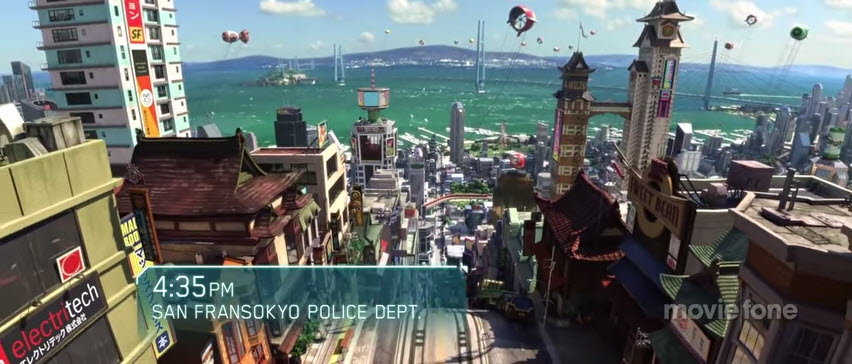San Fransokyo is the futuristic (fictional) city where the animated Disney movie ‘Big Hero 6’ plays out : our Saturday night home movie at the Bryan-and-Gary Cineplex. We liked it a lot. These 3D animated movies take monstrous computing power to animate and render fluidly. Check out the notes about this in the Wikipedia entry.
A software program called Denizen was used to create over 700 distinctive characters that populate the city, another one named Bonzai was responsible for the creation of the city’s 250,000 trees, while a new rendering system called Hyperion offered new illumination possibilities, like light shining through a translucent object (such as the robot Baymax’s vinyl covering). Development on Hyperion started in 2011 and was based upon research into multi-bounce complex global illumination originally conducted at Disney Research in Zürich. Disney in turn had to assemble a new supercomputing cluster just to handle Hyperion’s immense processing demands, which consists of over 2,300 Linux workstations distributed across four data centers (three in Los Angeles and one in San Francisco). Each workstation, as of 2014, included a pair of 2.4 GHz Intel Xeon processors, 256 GB of memory, and a pair of 300 GB solid-state drives configured as a RAID Level 0 array (that is, to operate as a single 600 GB drive). This was all backed by a central storage system with a capacity of five petabytes*, which holds all digital assets as well as archival copies of all 54 Disney Animation films. Pixar’s RenderMan was considered as a ‘Plan B’ for the film’s rendering, if Hyperion was not able to meet production deadlines.
*A petabyte (PB) is 1015 bytes of data, 1,000 terabytes (TB) or 1,000,000 gigabytes (GB).


